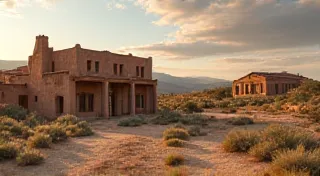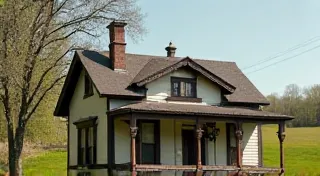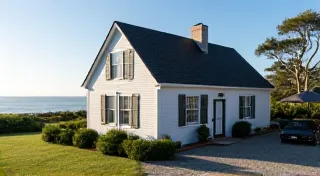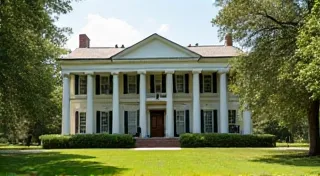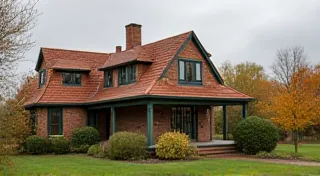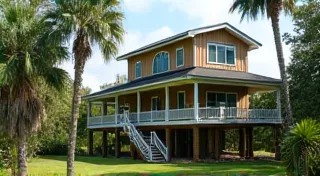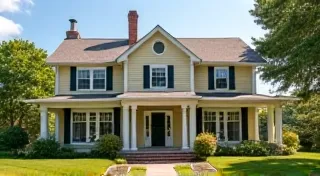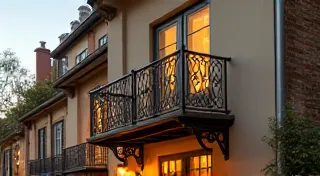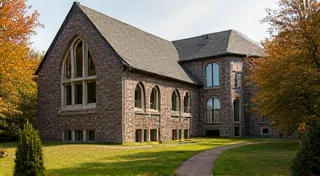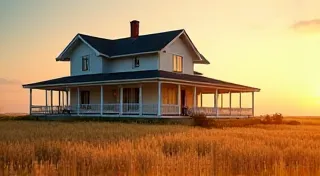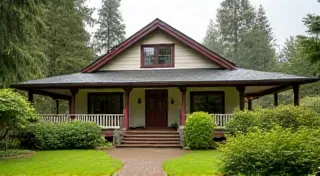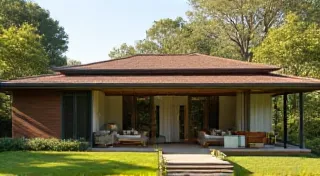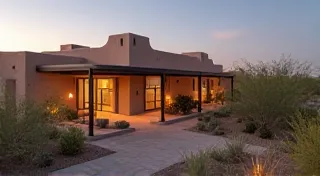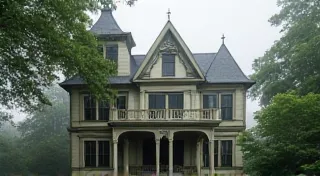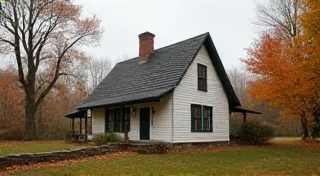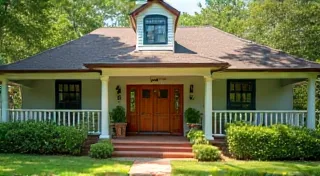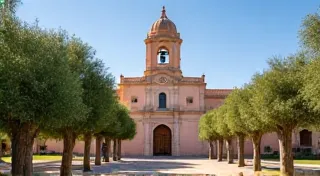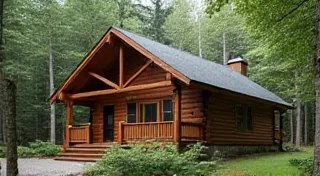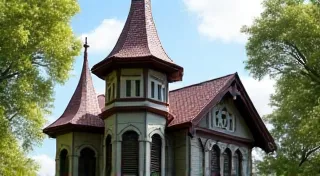Exploring the Rich Tapestry of Regional Architectural Styles
Architecture isn't just about buildings; it's a living record of history, culture, and adaptation. Each region across the United States, and indeed the world, has fostered unique building styles born from local materials, climate, and the aspirations of its inhabitants. Welcome to a journey through the fascinating world of regional architecture, where we delve into the stories etched in brick, wood, and stone. This site is dedicated to showcasing the remarkable diversity of historic buildings and the ingenuity of those who designed and built them. We’ve compiled a comprehensive guide to help you understand and appreciate the nuances of American architectural heritage.
From the arid landscapes of the American Southwest to the rolling hills of the Ozarks and the picturesque coastlines of New England, the influence of geography and tradition is undeniable. Early settlers often adapted existing building styles, modifying them to suit their new environment. The result is a wonderful mosaic of structures, each telling a story of innovation and resilience.
Understanding the Roots of Regional Variation
The development of distinctive regional architecture is a complex process. Factors like available resources – the type of wood, stone, or brick accessible – profoundly shaped the aesthetics and practicality of buildings. Climate played an even more critical role, dictating the need for features like wide verandas in the South to provide shade, or steeply pitched roofs in snowy regions to shed heavy snow loads. Furthermore, cultural traditions and the influx of immigrants brought their own distinct design elements, blending and evolving over time.
Consider, for instance, the challenges faced by settlers in the American Southwest. Their architectural responses, reflected in the Vernacular Architecture of the American Southwest, focused on maximizing shade, minimizing water usage, and utilizing adobe – a readily available resource. These designs stand as a testament to the close relationship between people and their environment.
A Journey Through Key Regional Styles
Let's embark on a guided tour of some of the most captivating and representative regional architecture styles across the United States. We've organized these explorations thematically, highlighting the key characteristics and historical context of each.
Southern Charm and Adaptation
The Southern United States boasts a unique architectural heritage, shaped by a blend of European influences and the realities of a warm, humid climate. The Shotgun Houses of the Southern United States, with their distinctive long, narrow profiles, are a prime example of functional design responding to specific social and economic conditions. Further north, in Arkansas, the Arkansas Folk Victorian style demonstrates a delightful adaptation of Victorian aesthetics to the Ozark landscape – a testament to the charm and adaptability inherent in regional building.
The Carolinian Colonial Architecture embodies a fascinating synthesis of European design principles and Southern sensibilities. Meanwhile, Florida Cracker Architecture, prevalent in Florida, represents a response to the unique challenges of the Sunshine State’s climate, emphasizing practicality and ventilation. The legacy of French influence is beautifully preserved in French Colonial Architecture in Louisiana, a style profoundly shaped by Creole heritage.
Northeastern Innovations and Traditions
New England's architectural landscape is equally diverse. Saltbox Architecture in New England, instantly recognizable by its distinctive asymmetrical roofline, arose from a combination of practicality and a desire to maximize usable space. The grandeur of the Gothic Revival in New England evokes a romantic return to the past, while demonstrating how architecture can be used to express cultural and spiritual aspirations.
Moving further north, the elegance of Cape Cod Architecture reflects the region's maritime history, focusing on simple functionality and coastal charm. The dramatic flair of Victorian Italianate Architecture is a stunning contrast to the more restrained styles prevalent in other regions, showcasing ornate details and grand proportions.
Midwestern Resilience and Practicality
The Midwestern United States, characterized by its vast farmlands and hardworking communities, developed a distinct architectural identity rooted in resilience and practicality. Midwestern Farmhouse Architecture exemplifies this spirit, showcasing simple, functional designs that have stood the test of time. The spirit of community and close-knit living are evident in the architecture of the region.
Western Landscapes and Artistic Expressions
The Western United States presents a unique set of architectural challenges and opportunities. The unique blend of cultural heritage and landscape is demonstrated by Pueblo Revival Architecture, an homage to ancestral traditions in the Southwest.
Oregon, with its rugged terrain and rich natural resources, developed the distinctive Oregon Territorial Style, a practical and aesthetically pleasing blend of functionality and beauty. The Queen Anne Style in the Pacific Northwest displays a grand and elegant Victorian flair, often incorporating the region's abundant timber resources.
Beyond the Mainstream: Unique Regional Voices
Our exploration of regional architecture would be incomplete without acknowledging the contributions of often-overlooked communities. The influence of German immigrants in the early settlement of Tennessee is beautifully preserved in Tennessee German Architecture, characterized by its traditional log cabins and distinctive building techniques.
The Early 20th Century: New Movements and Modernism
The early 20th century witnessed a flourishing of new architectural movements that reshaped the American landscape. The Four Square Architecture, with its efficient and functional design, became a popular choice for urban and suburban homes, demonstrating a shift towards simpler forms and modern living. Prairie School Architecture, pioneered by Frank Lloyd Wright, championed horizontal lines, organic forms, and a deep connection to the surrounding landscape, reflecting a uniquely American vision of modernism.
Exploring the Significance of Historic Preservation
The preservation of historic buildings is crucial for safeguarding our cultural heritage. These structures are more than just collections of brick and mortar; they are tangible links to the past, offering invaluable insights into the lives of those who came before us. Understanding the history and significance of these buildings fosters a sense of place and strengthens our connection to our communities.
By studying the evolution of regional architecture, we gain a deeper appreciation for the ingenuity, creativity, and resilience of the people who built this nation. Each building tells a story – a story of adaptation, innovation, and the enduring power of the human spirit.
Dive Deeper: Further Exploration
We invite you to continue your journey through the fascinating world of American regional architecture. Click on the links below to delve deeper into specific styles and explore the stories behind these remarkable buildings:
- Vernacular Architecture of the American Southwest
- Arkansas Folk Victorian
- Cape Cod Architecture
- Carolinian Colonial Architecture
- Dutch Colonial Architecture in New York
- Florida Cracker Architecture
- Four Square Architecture
- French Colonial Architecture in Louisiana
- Gothic Revival in New England
- Midwestern Farmhouse Architecture
- Oregon Territorial Style
- Prairie School Architecture
- Pueblo Revival Architecture
- Queen Anne Style in the Pacific Northwest
- Saltbox Architecture in New England
- Shotgun Houses of the Southern United States
- Spanish Mission Architecture in California
- Tennessee German Architecture
- Victorian Italianate Architecture
We hope you enjoy exploring the incredible diversity of building styles that define the American landscape. Remember to share your discoveries and insights—let’s celebrate the rich tapestry of historic buildings that shape our nation’s story!
